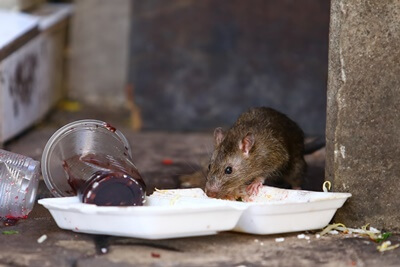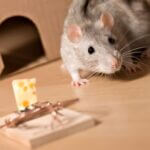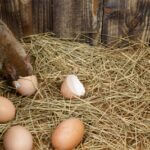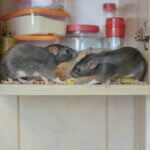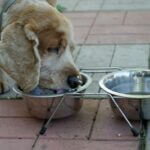Catching a rat may seem like an easy task, but that’s not the case.
Rats are suspicious creatures and can’t be tricked easily. If you want to catch a rat using a trap, you’ll need to use the right bait.
Rats can detect odorant molecules even at tiny concentrations. The best foods for attracting rats to traps are bacon, cheese, seeds, almonds, cereals, nuts, fish, berries, and peanut butter.
Rats have excellent olfactory systems and can smell strong-smelling foods from miles away. For this reason, you must utilize the right foods to attract rats to bait traps.
How Do You Attract Rats To Traps?
The only reasons rats enter our homes are food, water, and shelter.
Therefore, you can use different foods to attract rats to traps. According to the National Institute of Health, rats can detect the scent of food from great distances.
So, choosing the right bait can affect your efforts to catch a rat in a trap.
The foods rats find irresistible include:
- Peanut butter
- Walnuts
- Almonds
- Hazelnuts
- Berries
- Cheese
- Bacon
- Vegetables
- Cereals
- Meats
- Unflavored dental floss
- Slugs and snails
- Dried fruits
What Is The Best Live Trap Bait For Rats?
Rats are scavengers, and they prefer to forage for food rather than hunt.
For this reason, live trap baits for rats may not be effective in capturing them. That notwithstanding, you can still use live bait to trap rats.
The best live trap baits for rats include:
- Snails
- Slugs
- Insects
- Worms
- Leeches
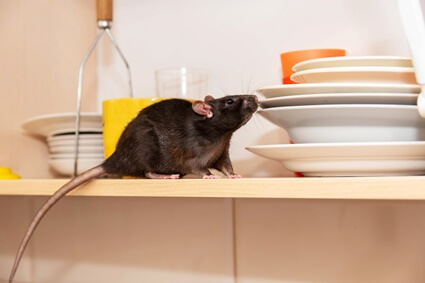
What Food Is Irresistible To Rats?
Rats have favorite meals that provide the most flavor, energy, and nutrients. Rats are more likely to approach the trap if you offer these foods.
Examples of irresistible rat bait include:
- Bacon
- Nuts
- Peanut butter
- Dried fruits
- Hot dogs
- Sausages
- Gumdrops
- Chocolates
- Candies
What To Do When Rats Won’t Go Near Traps
According to the University of Guelph in Canada, rats are highly intelligent and suspicious animals. They’re always cautious of anything new in their environment, including traps.
This makes it hard to capture them, and they may avoid going near any trap you set up on your property. Generally, they often need time to get familiar with any new object, but you can hasten the process.
Here are some tips to lure and capture rats that won’t go near your traps:
Trap Placement
Rats won’t go near traps if you set them up in the wrong places.
The most effective area to establish a trap is along walls and skirting boards, where rats often frequent. Rats use these areas instinctively as guides when roaming around, and they often avoid moving to the center of the room.
You can also place traps inside closets, kitchen cabinetry, and under furniture to increase the chances of catching stubborn rats.
Irresistible Bait
The food you use as bait can determine if a rat will get caught in a trap. Rats can sometimes be picky and will ignore if they have other options.
If you want your trap to be effective, consider using delicious meals. such as:
- Nuts
- Meats
- Peanut butter
- Moldy cheese
Trick Rats into Trusting Traps
Rats will often be cautious about approaching an unfamiliar object in their environment. Fortunately, you can trick rats in your home into trusting traps.
You only need to place the trap in a high-traffic area without setting it up. This will allow the rats to get accustomed to it. Once they are familiar with the trap, you can set it up accordingly.
Let Rats Sample Some Baits
To capture stubborn rats, let them eat some of the food used as bait before setting up the trap.
Rats have different food preferences depending on their species, and allowing them to sample the food will get them accustomed to the new bait.
Right Trap
Rats vary in size depending on the species. So, using the incorrect trap might prove ineffective in capturing stubborn rats.
Wild mice measure up to 4 inches, while Norway rats (brown rats) can be as big as 10 inches long. The size of the rat will determine whether you should use a catch-and-release trap or a snap trap.
Multiple Traps
A single trap won’t do the trick if you face a severe rat problem in your home or business. The trap may capture one rat, and the other rats will notice this and avoid coming close to the snare.
If you want to increase the odds of capturing rats, consider placing multiple traps in strategic locations around your home.
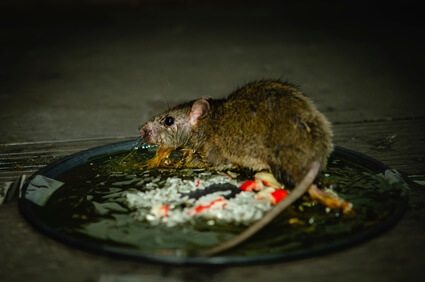
Place Traps Outdoors
The best way to deal with a rat problem is to place traps outdoors to prevent them from coming in.
Rats usually build their nests in yards and only come inside because of a swelling population or competition for food. Setting up your traps outside near compost pits and garbage cans will help prevent a potential infestation.
Bait Size
Sometimes your rat trap may not work because the bait is too big.
Large pieces of food are easy for the rat to drag out of the trap and consume elsewhere. In addition, rats prefer bait they can grab and hold with their paws and claws, so you should consider using longer or thinner foods as bait.
Electronic Traps
Snap traps may not be ideal when dealing with heavy infestations. Instead, consider using electronic traps, as they are more effective in trapping huge rat populations.
A single electronic trap can catch close to 50 rats. The best part is that you don’t have to use any bait. The trap comes baited, and it kills rats instantly and humanely.
Glue Traps
Glue traps are ideal if you don’t want to use any bait.
They’re easy to set up and effective in capturing stubborn rats. The rats won’t notice or become suspicious of the trap as long as you set it up along active areas, such as near walls and skirting boards.
Stuck rats are likely to die of thirst or starvation, but you can also release them into the wild if you don’t want to kill them.
The best foods for rats are fatty, flavorful, and produce a strong odor. You can encourage rats to approach traps they would otherwise avoid by tempting them with their favorite meals.

